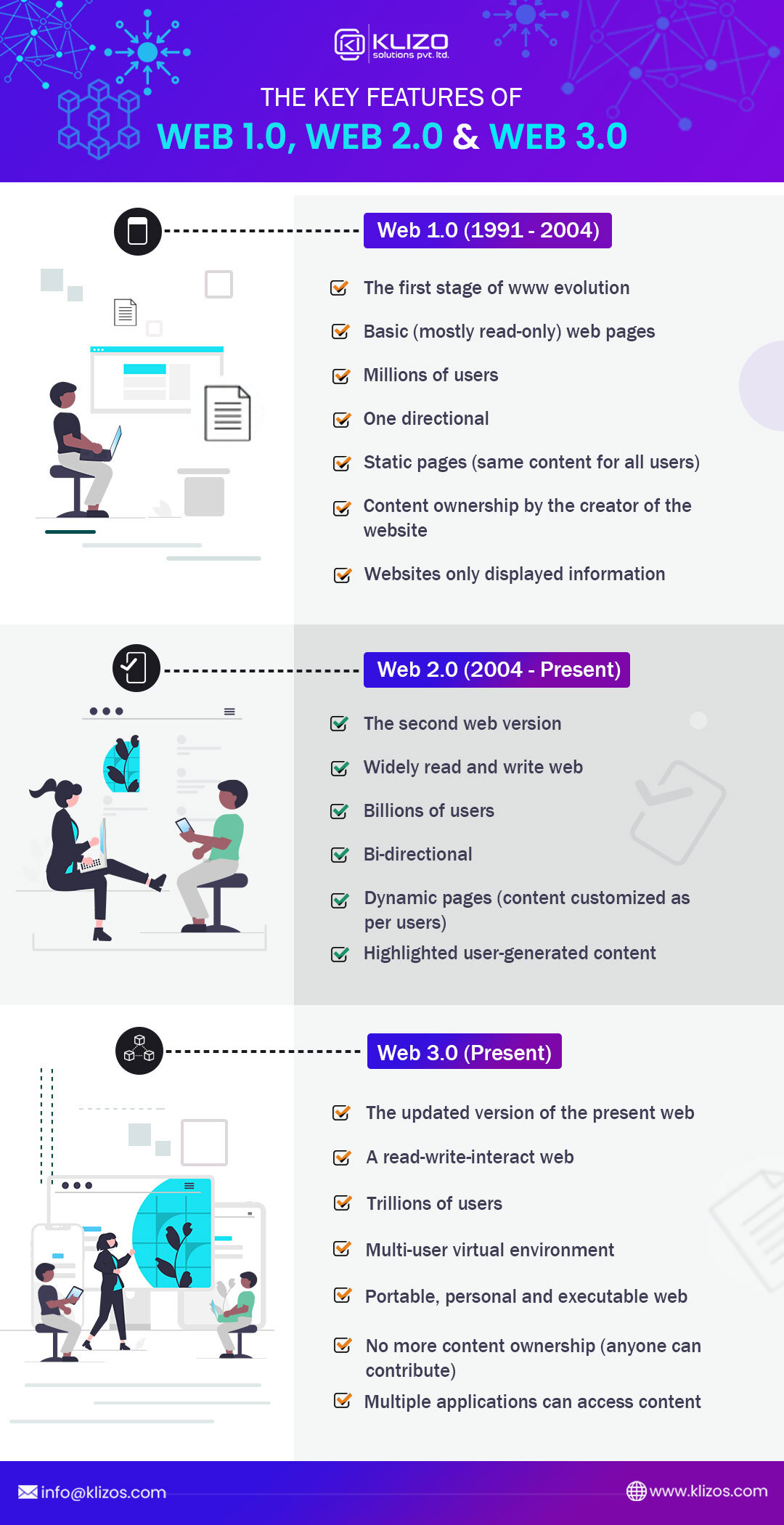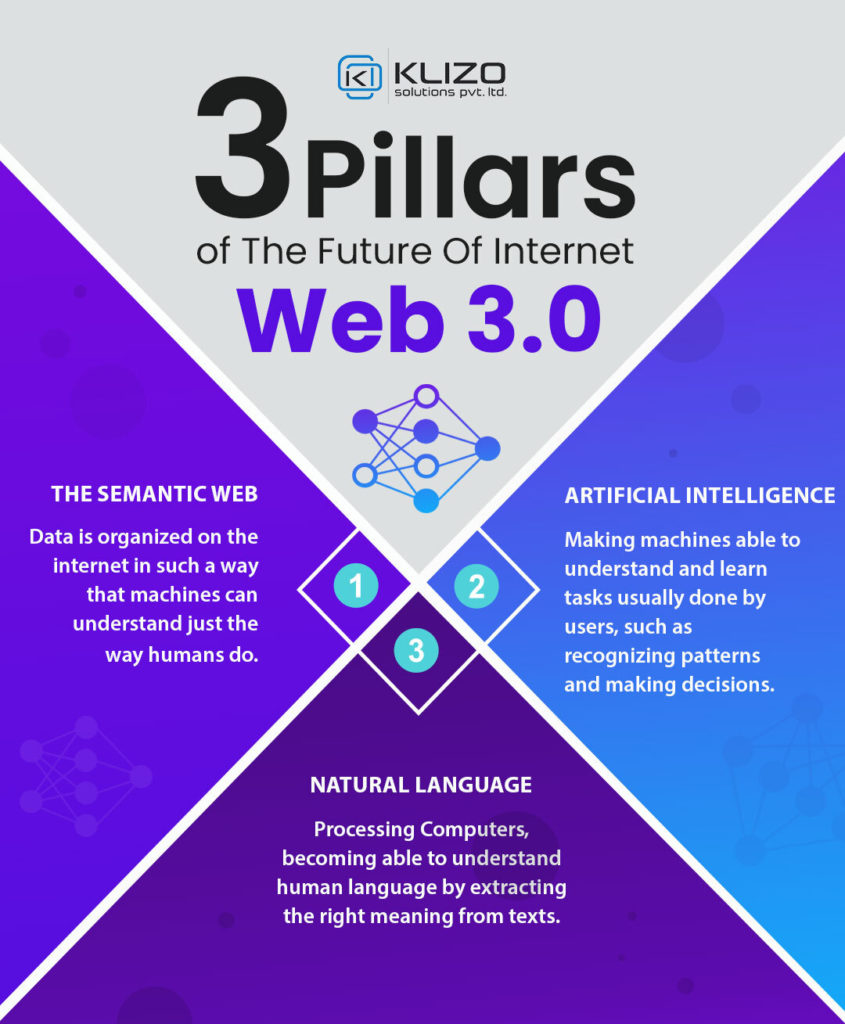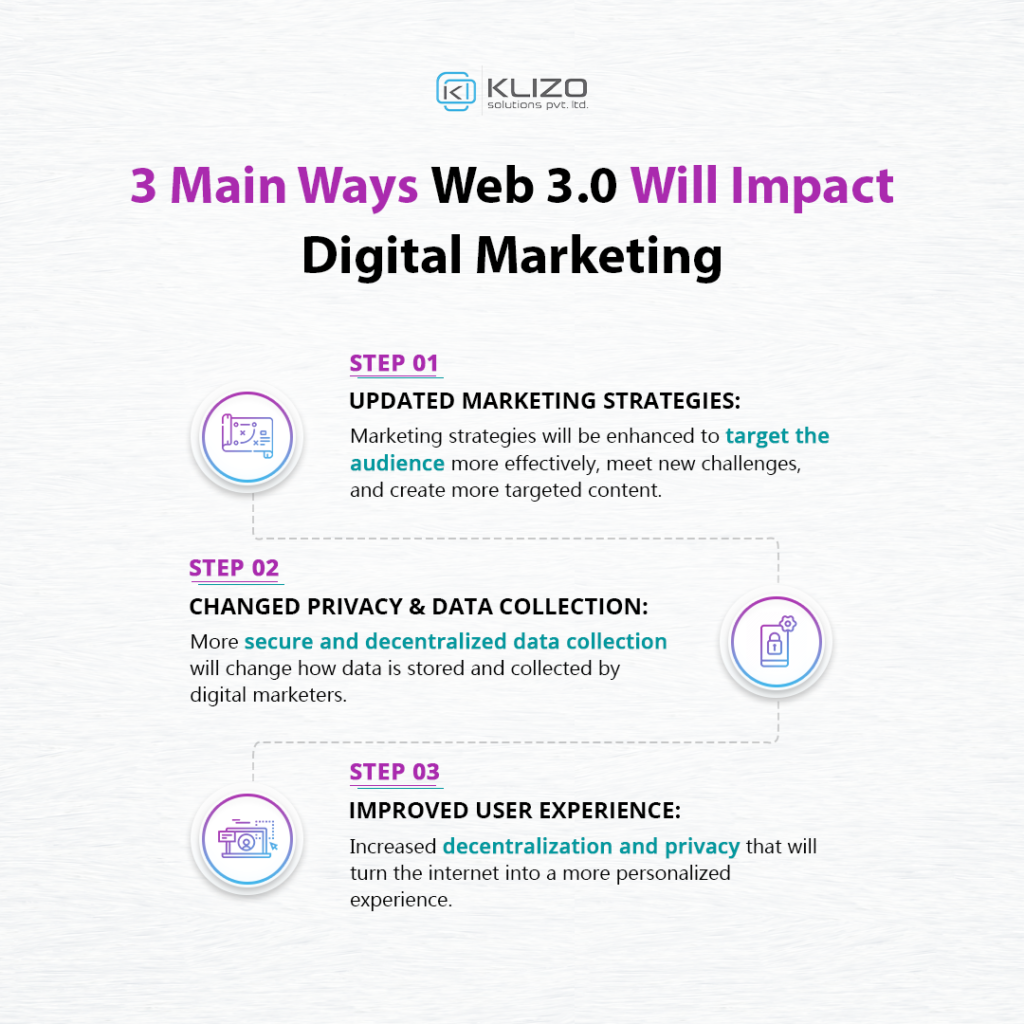


Are you aware that the era of Web 3.0, the next phase of the internet, is soon to begin?
In the history of humankind, the internet is undoubtedly the most crucial technology. Although it has progressed significantly and gotten better and better since its inception, it still needs upgrades!
Starting with Web 1.0, the evolution of the internet has brought us to Web 3.0, the third generation of web technology. While this version of the internet is still new and is still being defined and evolving, you will be amazed to know that this technology holds immense potential to benefit your business by revolutionizing digital marketing.
Let’s delve deeper into it to know how this next phase of the internet can better organize information and business activities on a wide scale in a complex, ever-changing information-intensive environment!
Since the invention of the first Web version in the 90s, its technologies have undergone various modifications and makeovers to reach where it is now, i.e., Web 3.0, the next phase of the internet. So before we start with this new generation of the internet, let us also know a bit about Web 1.0 and Web 2.0.

Web 1.0 mainly displayed data and information in a static style, with little user interaction with the material. It was the first stage of the internet evolution, where personal web pages were everything.
Web 1.0 technologies and approaches are still there for displaying static content like laws and manuals. On Web 1.0, the users are responsible for their navigation and content identification, with passive involvement in the process.
Unlike Web 1.0, it is the users who create content on Web 2.0. This version of the internet highlights user-generated content and is also known as the participative Social Web. While Wikipedia is a fine example of this model, social media sites, YouTube, and even blogs are fine examples of user-generated content systems.
In Web 2.0, users are no longer only content consumers; they are also content producers or co-producers. As there is no room for lists of links in directories, it has resulted in a massive volume of content created by users.
Web 2.0 applications allow end-users to be a participant and not just users when using its tools or applications like broadcasting, tagging, blogging, web content voting, social bookmarking and social networking, etc.
Web 3.0 is the next phase of internet technology that is believed to place great emphasis on technologies like AI and machine learning. It combines the advanced functionalities of Web 2.0 with the community-governed decentralized ethos of Web 1.0.

It promises to establish information in a more reasonable way than Google does with its present engine schema. Here data is not owned but shared. After a long time of focusing on the front end, Web 3.0 is likely to pay attention to the upgradation of the back end of the web.
Use of the semantic web to improve web technologies, wide use of 3D graphics in websites and services, and inclusion of technologies like Artificial Intelligence, blockchain, decentralized protocols, enhanced connectivity, and content ubiquity are some of the main features that define Web 3.0.
Though Web 3.0 is still being defined and evolving, we cannot deny its power to create a new future for digital marketing. The way it is determined to engage the users and provide real value and experience, be ready to get a complete makeover of how you do business online and market your brand using the web.
Read on to know exactly how this next phase of the internet can benefit digital marketing and your business!
Yes, businesses are likely to benefit the most from the next phase of the internet as they will be able to create more effective marketing strategies because of the integration of intelligent data.
But to benefit and make the users see content that is most relevant to them, businesses need to update their marketing strategies as there will not be any third-party cookies available.
Plus, it will also help them create more targeted and personalized content. According to 84% of digital marketers, using technologies like AI and machine learning that drive Web 3.0 improves their ability to provide a more personalized customer experience.
Demandbase, for example, is a B2B real-time targeting and personalization platform that identifies businesses visiting a website and puts that information to improve your existing marketing and sales programs and technology.
The next phase of the internet also lets you make targeting decisions and personalize the content or web experience based on previously unavailable visitor attributes. These include specific company, company size, number of employees, industry, or 1st party.
Web 3.0 will also provide CRM-based attributes like existing customers, strategic accounts, pipeline status, or even lists of competitors, using real-time identification. Several companies are now providing services related to Web 3.0. These services are primarily concerned with improving ad relevance through intelligent data.
Many businesses give information based on the content and structure of web pages to improve the relevancy and efficacy of online display advertising. These figures come from multiple sources, including websites, social media, mobile, video, email, search, display, PPC, and public relations.

In the CRM platform, you need the interaction histories of your former customers, current customers, and potential prospects. It is crucial to work with different sources and platforms, especially for executing a digital marketing plan for customers.
Businesses operate on an integrated strategy that includes CMS (Content Management Systems) like Drupal or Joomla, marketing automation tools like Marketo and Eloqua, CRM (Customer Relationship Management) tools like Salesforce and SugarCRM, Web Analytics like Google Analytics, and PPC (Pay Per Click) tools like Google Adwords.
Now in the next phase of the internet, CRM software will come with more user-friendliness, data binding, smart searches, and classifications by users and contain the Cloud. So you see, it will enhance how marketers engage customers and build relationships with them.
According to Gartner, 63% of digital marketing leaders face difficulty when it comes to offering a personalized experience to the users. But with Web 3.0, this will no longer be a challenge. Why? Because it enables digital marketers better understand the demands and preferences of the consumers as this new generation of internet offers better control over data security and privacy.
With decentralized internet, data security automatically increases as there is no longer any central point of attack. Plus, with Web 3.0, internet users can control who can access their data or what they can do with it. So, when relevant customer data is there, digital marketers can better target the audience and offer more personalized services.
The general population’s familiarity with this next phase of the internet is still pretty low (as per studies, 54% of American consumers have never heard the term Web 3.0). But it does not mean you should not know about it too!
After all, it is the ultimate magic potion for making your digital marketing more successful! And now that the transition toward Web 3.0 is becoming prominent, the sooner you become familiar with it, the higher the chances will be for you to get the maximum benefit from this latest version of the internet.
But then again, marketing in Web 3.0 can be pretty overwhelming, especially if you’re new to it! And that’s why you need professionals like us, Klizo Solutions, who can help you better manage your marketing campaigns and brand promotions in both Web 2.0 and Web 3.0 ecosystems!
So, what are you waiting for? Get in touch with our digital marketing experts today and embrace the future of brand marketing with absolute confidence!
Previous article
Joey Ricard
Klizo Solutions was founded by Joseph Ricard, a serial entrepreneur from America who has spent over ten years working in India, developing innovative tech solutions, building good teams, and admirable processes. And today, he has a team of over 50 super-talented people with him and various high-level technologies developed in multiple frameworks to his credit.

Subscribe to our newsletter to get the latest tech updates.